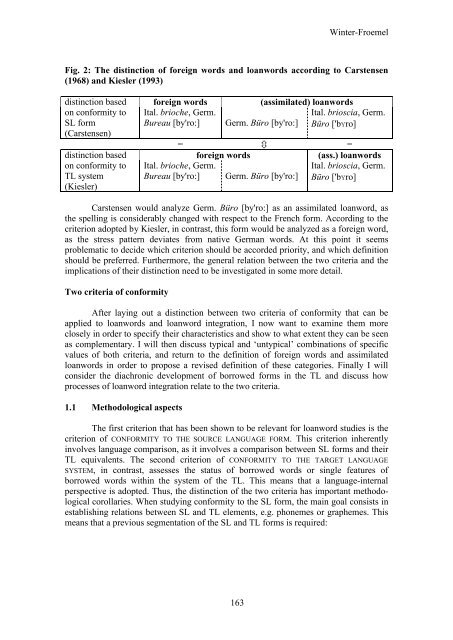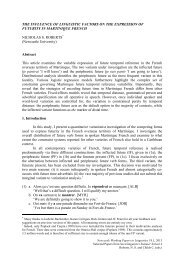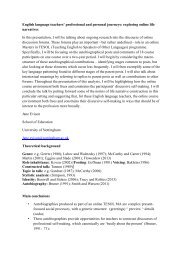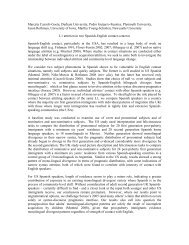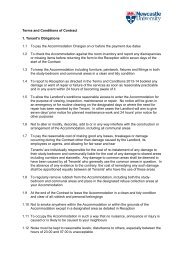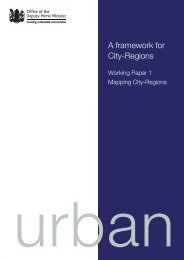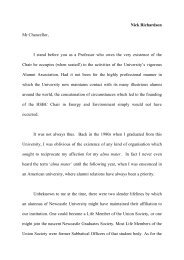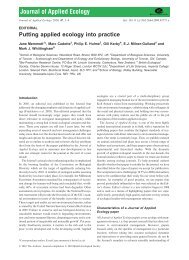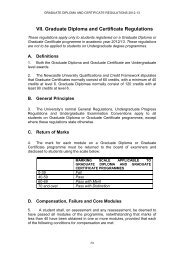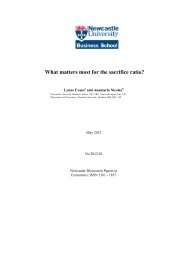156 STUDYING LOANWORDS AND LOANWORD INTEGRATION ...
156 STUDYING LOANWORDS AND LOANWORD INTEGRATION ...
156 STUDYING LOANWORDS AND LOANWORD INTEGRATION ...
You also want an ePaper? Increase the reach of your titles
YUMPU automatically turns print PDFs into web optimized ePapers that Google loves.
163<br />
Winter-Froemel<br />
Fig. 2: The distinction of foreign words and loanwords according to Carstensen<br />
(1968) and Kiesler (1993)<br />
distinction based<br />
on conformity to<br />
SL form<br />
(Carstensen)<br />
distinction based<br />
on conformity to<br />
TL system<br />
(Kiesler)<br />
foreign words (assimilated) loanwords<br />
Ital. brioche, Germ.<br />
Bureau [by'ro:] Germ. Büro [by'ro:]<br />
Ital. brioscia, Germ.<br />
Büro ['bʏro]<br />
= � =<br />
foreign words (ass.) loanwords<br />
Ital. brioche, Germ.<br />
Ital. brioscia, Germ.<br />
Bureau [by'ro:] Germ. Büro [by'ro:] Büro ['bʏro]<br />
Carstensen would analyze Germ. Büro [by'ro:] as an assimilated loanword, as<br />
the spelling is considerably changed with respect to the French form. According to the<br />
criterion adopted by Kiesler, in contrast, this form would be analyzed as a foreign word,<br />
as the stress pattern deviates from native German words. At this point it seems<br />
problematic to decide which criterion should be accorded priority, and which definition<br />
should be preferred. Furthermore, the general relation between the two criteria and the<br />
implications of their distinction need to be investigated in some more detail.<br />
Two criteria of conformity<br />
After laying out a distinction between two criteria of conformity that can be<br />
applied to loanwords and loanword integration, I now want to examine them more<br />
closely in order to specify their characteristics and show to what extent they can be seen<br />
as complementary. I will then discuss typical and ‘untypical’ combinations of specific<br />
values of both criteria, and return to the definition of foreign words and assimilated<br />
loanwords in order to propose a revised definition of these categories. Finally I will<br />
consider the diachronic development of borrowed forms in the TL and discuss how<br />
processes of loanword integration relate to the two criteria.<br />
1.1 Methodological aspects<br />
The first criterion that has been shown to be relevant for loanword studies is the<br />
criterion of CONFORMITY TO THE SOURCE LANGUAGE FORM. This criterion inherently<br />
involves language comparison, as it involves a comparison between SL forms and their<br />
TL equivalents. The second criterion of CONFORMITY TO THE TARGET LANGUAGE<br />
SYSTEM, in contrast, assesses the status of borrowed words or single features of<br />
borrowed words within the system of the TL. This means that a language-internal<br />
perspective is adopted. Thus, the distinction of the two criteria has important methodological<br />
corollaries. When studying conformity to the SL form, the main goal consists in<br />
establishing relations between SL and TL elements, e.g. phonemes or graphemes. This<br />
means that a previous segmentation of the SL and TL forms is required:


